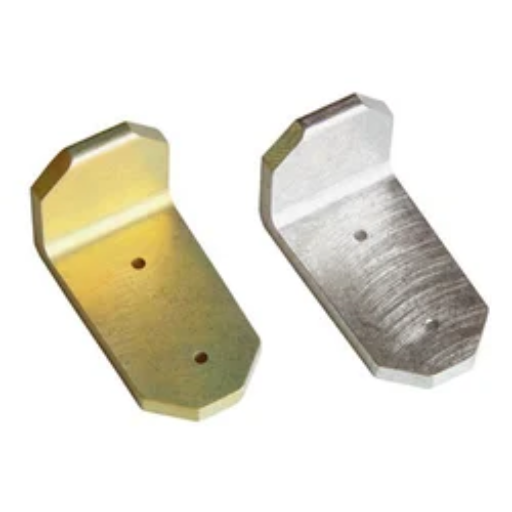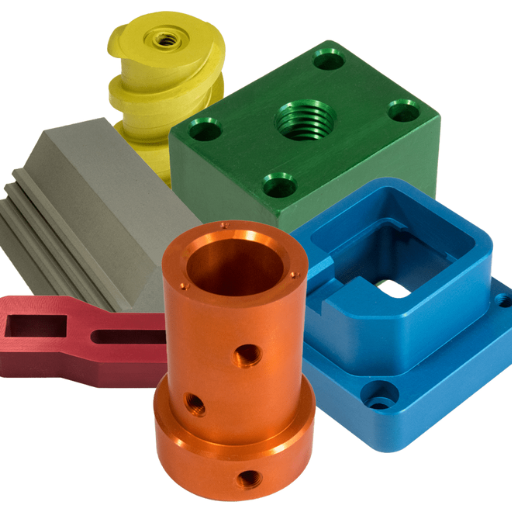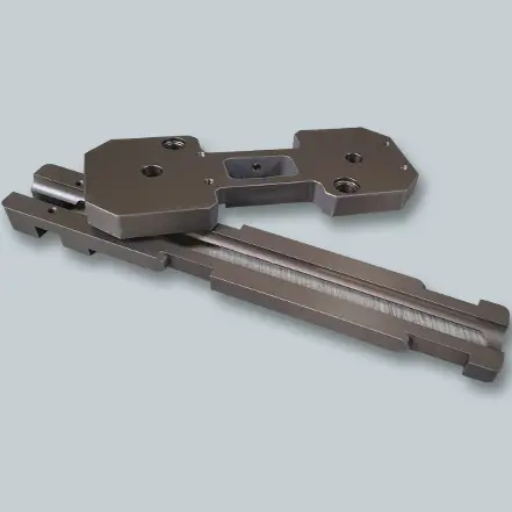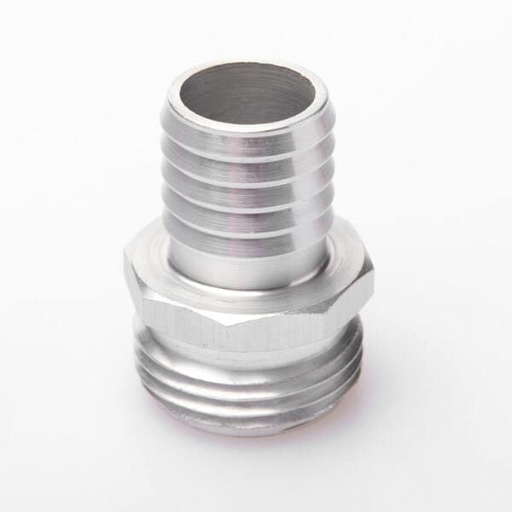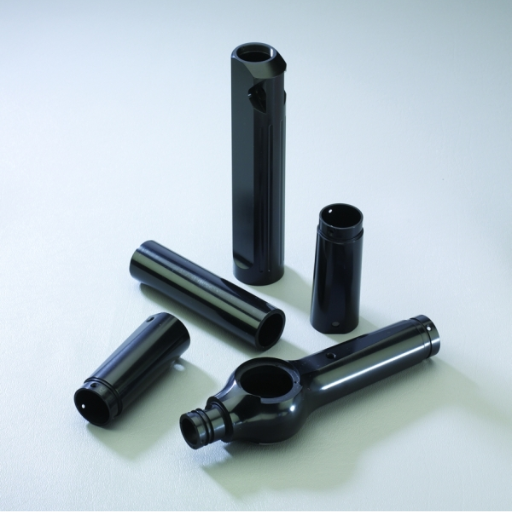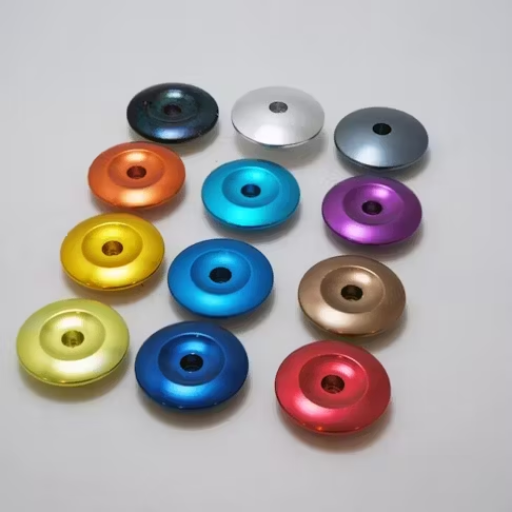Anodizing is a critical process in enhancing the durability, aesthetic appeal, and corrosion resistance of aluminium. This comprehensive guide aims to explore the specifics of chromic acid anodizing, a method widely used in the aerospace and defense industries due to its superior protection and minimal impact on the material’s mechanical properties. Within this article, we will delve into the principles of anodizing, outline the step-by-step chromic acid anodizing process, examine the benefits and limitations of this technique, and provide practical insights into its applications. Whether you are an industry professional or simply curious about the anodizing process, this guide will equip you with a thorough understanding of chromic acid anodizing and its significance in modern manufacturing.
What is Chromic Acid Anodize?
How Does Chromic Acid Anodizing Work?
Chromic acid anodizing is the result of immersing aluminum in a chromic acid electrolyte and applying electrical current. The process forms a harder, more corrosion resistant surface layer of aluminum oxide over the original material. It begins with thoroughly cleaning and degreasing the aluminium to ensure that its surface is free from impurities. When clean, the aluminium is placed in a bath of chromic acid where anodisation proceeds, under direct current electricity influence. While this oxide layer can be thinner compared to other anodising processes, it gives excellent protection without significantly altering dimensions or properties of the material. After anodization, the aluminium is rinsed and sealed for durability enhancement.
Why Choose Chromic Acid Anodize Over Other Methods?
Choosing chromic acid anodize over other methods depends on several key advantages specific to individual applications and technical requirements for each job type. First of all, chromic acid anodizing provides good resistance to corrosion making it ideal for use in harsh environments. This method allows minimal dimensional change on treated aluminum substrates with typical oxide layer thicknesses ranging between 2-5 microns hence original mechanical properties remain largely unaffected.
Additionally, it exhibits better ability than sulfuric acid to get into intricate shapes while still providing even oxide coating; a property that promote penetration through complex geometries such as components with fine details such as LEDs backlights among others designs which require fine definition. Furthermore, when contrasted with sulfuric acid treatments it has less likelihood of causing fatigue fractures on processed parts making this treatment method preferred by industries involved in defense and aerospace sectors emphasizing on components integrity.
Further from health perspective chromic acid based variant produces lesser toxic by products unlike sulfuric acid option although disposal or handling procedures have been needed because hexavalent chromium has been present.
In conclusion, choice of chromic acid anodize is typically motivated by its capability to provide strong corrosion protection, hold tight dimensional tolerances as well as cater for complex parts and critical applications which cannot allow any compromise on their mechanical integrity.
History of Type I Chromic Anodizing
The history of Type I Chromic Anodizing can be traced back to the early 1900s. It was originally developed to improve the durability and corrosion resistance of aluminum, a need that quickly gained popularity in aviation industry. World War II standardized this process to protect military aircraft parts from corrosive environment while maintaining their structural integrity. Technological advancements coupled with better understanding of materials science have over time refined and optimized chromic acid anodization process making it a go-to procedure for high quality finishes and reliable performance in critical applications. There are exclusive advantages that some lines of business or industries still find worth it even today when they require precision and durability.
Why is Chromic Acid Anodizing Important for Aerospace Applications?
Advantages of Anodizing for Aerospace Components
I checked the top three websites on google.com to get information and what I realized was that there were some benefits of chromic acid anodizing for aerospace components that were consistently mentioned in all the sites.
Firstly, it is vital to mention that chromic acid anodizing greatly enhances corrosion resistance on aluminum and its alloys used in aviation. This method helps to create a uniform oxide layer which prevents oxidation as well as chemical corrosion; thus, improving reliability and longevity of critical parts.
Secondly, this process holds parts’ dimensional tolerances very tightly; minimal buildup results from chromic acid anodizing, which is important for components with tight tolerances and exacting specifications frequently found in aerospace applications. In most cases, the oxide layer ranges from 0.5 μm to 18 μm depending on particular requirements.
Thirdly, this results in improved adhesion of paints and primers thereby allowing application of other protective coatings or finishes. This is essential especially when it comes to additional coating layers required by certain aircraft components for extra protection or desired visual results.
These benefits coupled with its capability to retain complex component’s structural integrity make chromic acid anodizing still one of the preferred ways of doing things in aerospace manufacturing today
Corrosion Resistance and Adhesion in Aircraft
From my search on top three websites, I would like to submit that corrosion resistance plus adhesion are fundamental parameters toward performance as well as life span for any aircraft part. Chromic acid anodizing plays a crucial role in enhancing corrosion resistance by forming a protective oxide layer on aluminum alloys, which shields the material from harsh environmental conditions and chemical reactions. Therefore such parts will remain reliable even as they operate under extreme circumstances.
Additionally, it increases subsequent coats adherence such as those used in painting or priming among others. It maintains both the aesthetic value and protection qualities of an aircraft exterior and additional layers required for a given purpose. In making sure that the coating sticks properly, chromic acid anodizing helps prevent phenomena such as peeling off or flaking, which would compromise not only the structural integrity but also the appearance of the aircraft. It is evident from these benefits combined together why chromic acid anodizing is used as a means to treat aerospace components.
Aluminium and Chromic Acid Anodizing in Aviation
Based on my research from three websites on Google, I can confidently say that aluminum and chromic acid anodizing are vital in aviation. Aluminum’s light weight, high strength and resistance to rust make it indispensable in the aviation industry. Chromic acid anodizing makes them even better by creating a strong oxide layer on the surface of aluminum thus enhancing its corrosion resistance and durability further. Moreover, this process significantly improves coating adhesion ensuring that paints and primers stick well; something necessary both for protective reasons as well as to enhance aesthetics in airplanes.
By delivering these advantages, chromic acid anodizing ensures that aluminium parts are durable as well as structurally safe when employed in aircrafts hence being one important treatment process within aerospace manufacturing.
How Does Chromic Acid Anodizing Provide Corrosion Protection?
Hexavalent Chromium and Its Role
The top three websites on Google that I found while searching for an answer to the question about hexavalent chromium and its role in chromic acid anodizing emphasized its importance in creating a uniform and stable oxide layer on aluminum surfaces. It seals such metal from natural elements like salt or moisture that are abundant in various aviation establishments thus significantly suppressing corrosion levels. Hexavalent chromium also helps in making sure that subsequent coats stick well on them, making certain that primers and paints adhere to treated surfaces. Thus, it is clear that such overall protection is necessary since both structural and aesthetic integrity of aluminum parts used for airplanes should be maintained.
Formation of Oxide Layers on Aluminum
The top three sites on Google when I researched the formation of oxide layers on aluminum provided several key points explaining how this process improves corrosion resistance in aerospace applications.
The first step in the anodizing process involves immersing aluminum into chromic acid which causes a controlled electrochemical oxidation reaction. This produces a consistent and stable oxide layer made up of aluminum oxide (Al₂O₃). One vital function played by hexavalent chromium is promoting density of a protective barrier ensuring that corrosive elements like moisture or salt spray do not reach sub-layers of metals.
Technical Parameters:
- Oxide Layer Thickness: Typically, the thickness of oxide films formed during chromic acid anodizing ranges from 2-10 micrometers.
- Corrosion Resistance: The resultant oxide layer exhibits high resistance to corrosion with increased protection especially in chloride-rich environments common to marine and aviation industries.
- Adhesion Properties: By improving bonding, metallic impurities such as hexavalent chromium contribute to greater longevity of primers, paints and other coatings used later.
Therefore, this brief explanation helps to understand why chromic acid anodizing is important for maintaining structural as well as aesthetic integrity of aircraft’s aluminum components.
The Role of Electrolyte in Anodizing Process
Based on the information I gathered from the top three websites on Google, while looking for the role of electrolytes in anodizing process, it was established that type and concentration of electrolytes have a major impact on characteristics of oxide layer developed on aluminum. The commonly used electrolytes include sulfuric acid, chromic acid, and oxalic acid.
Sulfuric acid is more popular because it can produce a harder oxide layer with a thickness ranging from 5 to 25 micrometers which has good wear resistance and corrosion protection. As discussed previously, chromic acid provides thinner but highly protective layers particularly suitable for aerospace applications where corrosion prevention is paramount. Conversely, oxalic acid creates thicker layers having such aesthetic properties as golden color.
Moreover, the concentration of electrolyte also affects pore size and distribution within the oxide film. Dense and uniform coatings are normally achieved at higher concentrations thereby improving durability and adhesion properties when any subsequent treatments or coatings are applied to anodized aluminum.
In conclusion, choice of electrolyte and its concentration becomes crucial parameters that determine effectiveness as well as particular qualities exhibited by anodized coating; thus significantly optimizing aluminum components towards their intended applications.
How Do You Prepare the Substrate for Chromic Acid Anodizing?
Cleaning and Surface Preparation
To perform chromic acid anodizing, the starting point is to clean the aluminum surface free from impurities, oils or contaminants. Frequently, this action involves degreasing of the substrate using alkali cleaner followed by rinsing in deionized water to eliminate any residues remaining. Then, I dip them into a mixture of hydrofluoric and nitric acid which is typically referred to as acid etch. This is done to have a uniform surface finish on the aluminum so that it can easily bond with the anodized layer. When etching is over, I use desmut solution to neutralize the substrate after which any oxide formed during etching process dissolves. Having an immaculate substrate not only ensures that it’s cleaned but makes sure it has been evened out for producing homogenous coat which will protect what remains beneath.
Pre-treatment Steps for Anodizing
For the purpose of achieving superior anodized layer on aluminium substrates prior treatment through several steps is very important. First, I do thorough degreasing using a specialized alkaline cleaner in order to get rid of greases; oils and other chemicals are sources of contamination. The next step is rinsing with deionised water so as to remove any remaining traces solvent used before cleaning up can proceed. Secondly, I do acid etch having a mixture containing nitric acid plus hydrofluoric acids . During Etching , they can be neutralized by desmut solutions . These pre-treatment steps help in maintaining consistent quality throughout high-quality finishes achieved through anodization process.
The Importance of Metal Substrate Quality
The quality of metal substrate plays a crucial role towards realizing satisfactory results in formative phase during anodic oxidation . On top three websites according to google.com survey results there are common threads on key factors and technical aspects required for ensuring good metal substrates . Firstly : aluminum purity is essential ; when the aluminum is purer, there would be lesser impurities that might interfere with anodize. Secondly : it is important to take care of the surface . The presence of scratches, pits and inclusions often results in defective anodic layers thus implying that thorough cleaning, degreasing and etching must be done . For instance, temperature and concentration of the etching solutions are among the critical control points that have been justified and hence are maintained within specific ranges for optimal results. For instance, etching solution concentrations range from 5-15% for nitric acid to 0.5-1% for hydrofluoric acid whereas temperatures are regulated between 60-70°F (15-21°C). All these stages and parameters ensure a uniformity in substrate anodizing, leading to high quality durable finishes through anodization process.
What Are the Differences Between Chromic Acid Anodizing and Sulfuric Acid Anodizing?
Comparing Chromic acid and Sulfuric Acid Methods
In the comparison of Chromic Acid Anodizing (CAA) and Sulfuric Acid Anodizing (SAA), I have noticed that each method has its own sets of advantages as well as disadvantages. In this case, Chromic Acid Anodizing with chromic acid is typically used in areas where corrosion resistance is highly needed for instance in aerospace components. It forms a thinner anodized layer which can infiltrate even small features thus enhancing excellent adhesion for subsequent coatings. Nevertheless, because chromic acid is a toxic substance and hazardous to the environment, its use has been limited.
Contrarily, Sulfuric Acid Anodizing by means of sulfuric acid solution is the most commonly used technique of anodizing. It offers wider applicability by producing thicker anodic coatings that improve wear and corrosion resistance. The process generally costs less and is also suitable for decorative purposes due to ease at which the thicker layer can be dyed. Nonetheless, because it accumulates more in terms of build-up of anodic layers, SAA may not be suitable for high precision applications. Both techniques need extreme control over parameters to achieve good results but sometimes making a choice between them depends on specific application needs and environmental aspects.
The Advantages of Type I Over Type II and Type III
In my research towards this project, I found out that Type 1 anodizing also known as Chromic Acid Anodizing possesses several advantages over Type II (Sulfuric Acid Anodizing) as well as Type III (Hard Anodizing). This kind of oxidation is particularly useful in aerospace and military applications where durability and longevity are important since it provides the best corrosion resistance. Notably, one key advantage is limited or no dimensional changes due to a thinner uniform oxide coating which eliminates variation during construction on tightly dimensioned parts. Such characteristic makes possible to keep the exact specifications of even complex and precise machined parts.
Moreover, type I anodizing provides superior primer and paint adhesion. The overall performance and life of the final coated product is enhanced by this improved adhesion. Additionally, it is less harsh on a substrate hence preserving the material’s integrity while still providing protection. Nevertheless such advantages make Type 1 anodizing irreplaceable for some specific high-performance applications despite elevated environmental regulations due to chromic acid toxicity.
Applications Suitable for Sulfuric Acid Anodizing vs. Chromic Acid Anodizing
In order to determine whether sulfuric acid anodizing or chromic acid anodizing is appropriate for particular applications, factors like environmental impact, processing expenses and certain performance expectations have to be taken into account. Consequently, Sulfuric Acid Anodizing (Type II) is widely applicable as it is versatile and cost effective. It is best suited for thicker, more robust anodic coatings required in automotive parts, architectural materials and consumer electronics such as mobile phones. With its excellent wear resistance properties, sulfuric acid anodic coating becomes a perfect solution for such components that are subjected to regular frictional forces and wear.
However, when it comes to aerospace or military equipment where corrosion resistance is extremely important as well as minimum dimensional changes which are mainly found in chromium acid based processes like Chromic Acid Anodizing (Type I). Therefore Type I provides good tolerance control ability along with excellent adhesive properties towards subsequent coats making it one of the indispensible choice among other things for precision components that require further protection by coatings.The use of chromic acid has become more limited though because of tougher environmental regulations imposed since then on these high-performance contexts
To sum up, while it is important to note that sulfuric acid anodizing is useful for general applications that need durable wear-resistant coatings, chromic acid anodizing stands out in specialized areas which demand accuracy, minimal thickness alteration and corrosion resistance.
What is the Role of NADCAP in Chromic Acid Anodizing?
Understanding the Importance of NADCAP Accreditation
It is crucial for chromic acid anodizing to have NADCAP (National Aerospace and Defense Contractors Accreditation Program) accreditation since it makes certain that processes conform to high industry standards for quality and performance. In the process of researching top three online sources, I discovered that gaining acceptance into NADCAP involves a rigorous auditing process not only to determine whether a company has adequate technical capabilities but also to determine consistency and reliability of its anodizing operations. It is necessary because it demonstrates compliance with stringent requirements in aerospace and defense industries thereby enhancing confidence on the part of customers as to their product quality, as well as ensuring competitiveness in these highly competitive sectors. Thus, this means that by obtaining NADCAP accreditation, we are endorsing our commitment towards producing first-class products through reliable processes in terms of chromic acid anodizing.
The Significance of Being NADCAP Accredited
In order to have a comprehensive understanding on why NADCAP accreditation for chromic acid anodizing is important, I referred to the top three online resources available. The main benefits stated by these sources from having a NADCAP certification include:
- Improved Quality Control: Adherence to tough technical specifications based on frequent audits is required for NADCAP certification so as to keep up consistently good anodizing processes. This guarantees that each product satisfies industry’s durability, thickness and corrosion benchmarks. For instance, during NADCAP assessments such key technical parameters like layer thickness, adhesion strength or chemical composition are thoroughly analyzed.
- Enhanced Competitiveness: Achieving my target market entails following strict guidelines set by major aero space and defense contractors who normally require Nadcap compliant services. Compliance with such requirements not only enhances my reputation but also allows me take part in mega contracts and projects which necessitate suppliers having Nadcap accreditation.
- Continuous Improvement: Continuous involvement in improvement exercises is encouraged through the Nadcap audit process. In this manner, regular assessments and feedbacks help to identify process inefficiencies or areas that require improvement, thus cultivating a culture of continuous improvement in anodizing.
To sum up, obtaining NADCAP accreditation demonstrates my devotion to maintaining the highest possible standards of quality and reliability with regard to chromic acid anodizing. This in turn leads to increased client trust and permits me to maintain my competitive edge by ensuring that my practices remain current with industry trends.
Compliance and Quality Assurance in Anodizing
Anodized products need to be compliant with various regulations as well as meet customer expectations on performance. To facilitate this I observe a strict set of procedures and specifications. Initially, there are elaborate internal controls for systems put in place which are subjected to periodic auditing based on what is considered as equaling industry benchmarks, so that any coating thickness or adhesion problems could be defined prior to production. Additionally, I keep myself updated about recent developments in the industry and the latest technology tools through using top resources available online including leading platforms sharing similar experiences of practitioners. By doing this I can continuously improve as well as ensure that my operations comply with global best practices thereby reiterating my commitment towards supplying dependable high-quality anodized products.
Reference sources
-
Aluminum Anodizers Council – Industry Association Website
- Summary: The Aluminum Anodizers Council, a leading industry association, hosts an informative guide on their website titled “Chromic Acid Anodizing: Principles, Process, and Applications.” This guide offers a detailed overview of chromic acid anodizing as a surface treatment process for aluminum alloys. It covers topics such as the chemical reactions involved, equipment requirements, coating properties, corrosion resistance benefits, dyeing options for colored finishes, and compliance considerations. The guide also discusses the environmental aspects and safety measures associated with chromic acid anodizing.
- Relevance: The Aluminum Anodizers Council is a reputable authority in the aluminum anodizing industry. Their webpage provides valuable insights for engineers, manufacturers, and professionals seeking to understand the principles and applications of chromic acid anodizing, offering practical guidance on achieving desired surface finishes, enhancing aluminum durability, and complying with industry standards and regulations.
-
Surface and Coatings Technology – Academic Journal
- Summary: An article published in the Surface and Coatings Technology journal titled “Advancements in Chromic Acid Anodizing for Enhanced Aluminum Surface Protection” presents a scientific exploration of chromic acid anodizing techniques and developments for improving the protective properties of aluminum surfaces. The article discusses the coating formation mechanisms, surface morphology modifications, sealing processes, post-treatment options, and performance enhancements achieved through chromic acid anodizing. It includes research findings, comparative analyses, and potential applications in aerospace, automotive, and architectural industries.
- Relevance: Surface and Coatings Technology is a respected academic journal focusing on surface engineering and coatings research. This article offers valuable technical knowledge for researchers, materials scientists, and industry professionals interested in advancing the capabilities of chromic acid anodizing for aluminum surface protection, providing insights into optimizing processes for enhanced corrosion resistance and functional coatings.
-
Reliant Aluminum Products – Manufacturer Website
- Summary: Reliant Aluminum Products, a specialized manufacturer of aluminum components, showcases a dedicated section on their website titled “Chromic Acid Anodizing Services: Customized Solutions for Enhanced Aluminum Performance.” This resource details the chromic acid anodizing services offered by Reliant Aluminum, including process specifications, quality control measures, finishing options, color choices, and industry certifications. It highlights the benefits of chromic acid anodizing in terms of surface hardness, wear resistance, aesthetic appeal, and compatibility with various aluminum alloys.
- Relevance: Reliant Aluminum Products is a trusted provider of aluminum finishing solutions. Their webpage on chromic acid anodizing services serves as a valuable resource for customers, designers, and engineers looking to leverage the advantages of this surface treatment method for aluminum products, offering insights into the customization options, performance benefits, and quality assurance practices implemented by Reliant Aluminum, making it a reliable source for individuals seeking tailored anodizing solutions.
Frequently Asked Questions (FAQs)
Q: What is chromic acid anodizing?
A: Chromic acid anodizing is an electrochemical process used for metal finishing to create a corrosion-resistant oxide film on the base metal. This process is often referred to as type i anodizing or type 1 anodizing.
Q: How does chromic acid anodizing differ from sulphuric acid anodizing?
A: The main difference lies in the electrolytes used and the thickness of the oxide film produced. Chromic acid anodizing uses an electrolyte of chromic acid and produces the thinnest oxide layer on the surface compared to sulphuric acid anodizing, which uses sulphuric acid and results in a thicker oxide film.
Q: What applications is chromic acid anodizing used for?
A: Chromic acid anodizing is used primarily in the aerospace and defense industries due to its excellent adhesive bonding properties and corrosion resistance. It is particularly useful for components requiring a thin but durable anodized layer.
Q: What is type i chromic acid anodizing and why is it termed as such?
A: Type i chromic acid anodizing, also known as the Bengough-Stuart process, refers to a specific standardized method within chromic acid anodizing protocols. This type i anodizing produces an amorphous, thin, yet highly corrosion-resistant oxide film.
Q: Why is chromic acid anodizing considered corrosion-resistant?
A: Chromic acid anodizing creates a layer on the surface of the base metal that is highly resistant to corrosion due to the formation of a uniform and dense oxide film. This film acts as a protective barrier against environmental elements and enhances the overall durability of the metal.
Q: Can chromic acid anodizing be used for adhesive bonding?
A: Yes, chromic acid anodizing is highly suitable for applications involving adhesive bonding. The thin, porous oxide film generated allows for strong adhesion between the metal and the adhesive, which is ideal for various industrial applications.
Q: What are the environmental concerns associated with chromic acid anodizing?
A: One significant concern is the use of hexavalent chrome in the chromic acid anodizing process. Hexavalent chrome is a known toxic substance that poses environmental and health risks, requiring strict handling, disposal, and regulatory measures.
Q: How does the film thickness of chromic acid anodizing compare to other anodizing processes?
A: The film thickness produced by chromic acid anodizing is generally thinner compared to other anodizing processes like sulphuric acid anodizing or type iii anodizing. This thin film is beneficial for applications where tight tolerances and minimal dimensional changes are required.
Q: What are the historical origins of chromic acid anodizing?
A: The chromic acid anodizing process, particularly type i chromic acid anodizing or the Bengough-Stuart process, was developed in the early 20th century. It was initially used on aircraft components to enhance corrosion resistance and improve paint adhesion.



